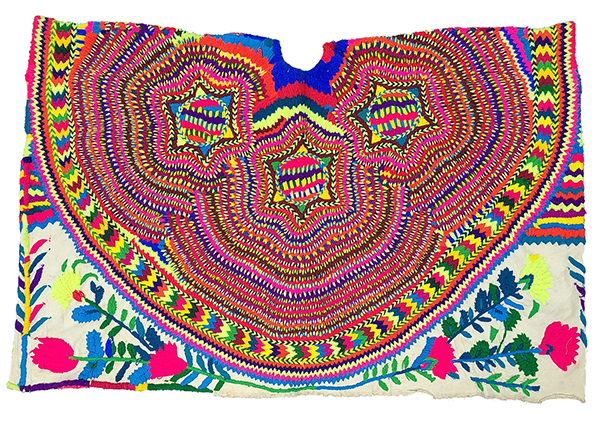Maya Huipil

A huipil is a rectangular blouse that makes up part of a Maya women’s traditional outfit. The word huipil comes from the Nahuatl (Aztec) language, and blouses in this style have been worn by indigenous Mesoamerican women for more than one thousand years.
This huipil is from the Maya town of San Mateo Ixtatán in the department of Huehuetenango, Guatemala. The town is in the northwestern part of the county, high in the Cuchumantanes Mountains. The people of San Mateo are often referred to as Chuj Maya, based on the language they speak, but they prefer to identify themselves based on the name of their municipality, in this case as ajSan Matéyo.
The women of San Mateo Ixtatán make and wear huipiles that are different from all others in Guatemala and immediately identifiable. Since at least the beginning of the 20th century, the women have made their voluminous huipiles by embroidering a double layer of commercially produced white cotton cloth, rather than weaving the garment on a backstrap loom. The women heavily embroider the blouse on both sides so that it is completely reversible, with the same design inside and out. The double-sided embroidery makes the huipil very heavy, and appropriate for the cool climate of the high mountain town. Huipiles from San Mateo are also longer than those found elsewhere in the country. They are worn over wrapped skirts, rather than tucked in. Because of the intricate hand-stitched designs, a huipil like this one can take many months to complete.
In addition to being beautiful pieces of clothing, huipiles also express the wearer’s ethnic identity, often indicating a specific community of origin, as this one does. The designs can reflect aspects of the Maya beliefs and connections to the natural world. In this piece, the stars may connect to the centrality of astrology in the Maya worldview, and the zigzags likely represent the mountains surrounding their home.
